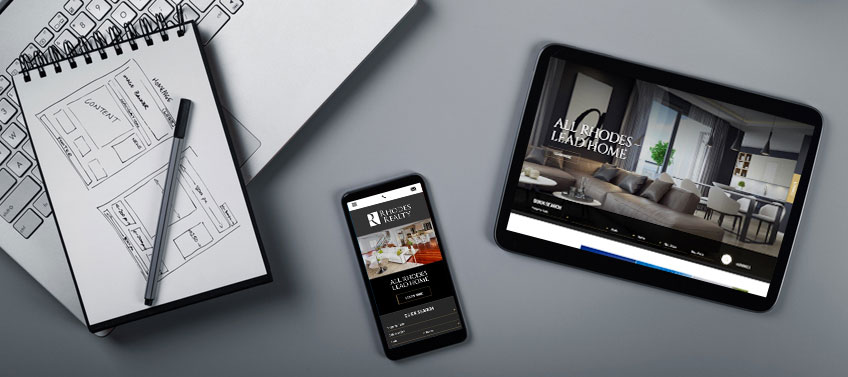9 Critical Website Errors And How To Fix Them
Having a well-designed and fully-functional website is crucial to your real estate business. Not only does a good website improve your online presence, but it also provides good user experience and it helps you stand out from the crowd.
Here are 9 critical website errors you might spot on your website, along with some fixes that could help you out in resolving them:
-
The website is not mobile-friendly
Majority of buyers and sellers use their smartphones to search for homes and check out agents’ websites. Optimizing your real estate website for mobile would be very beneficial because it allows users to easily access your site wherever they are.
Your website’s accessibility and compatibility on mobile also affect your Google ranking. Websites that aren’t mobile-friendly rank lower in Google searches, regardless of the content.
How to fix it: Enter your real estate website URL in Google’s mobile-friendly test to check if your site is compatible with mobile devices. If it is not, an innovative mobile-friendly solution would be the best option. Use a website development platform that already has built-in layouts and modules designed for mobile, or consult with a website developer who can assist you with the technical aspects of your website structure.

-
Outdated content
Your website’s content should be reliable, relevant, and useful to your site visitors. If users can’t find what they’re looking for on your website, they’ll look for another website that has it. Some tell-tale signs of outdated website content include the absence of recent posts and updates from the last few months, or seeing content written about things that are no longer current in the market or in the community. You may also have content that is lacking significant value to search engines, such as having plenty of photos, but only with very basic headings or descriptions. There may also be a handful of links that are no longer working that need to be checked time after time.
How to fix it: Do a full audit of your website’s pages and written content to take stock of the sections that need some sprucing up. Utilize Search Engine Optimization (SEO) keywords in your website content, especially in your real estate blog posts. Keywords like “houses for sale in x location” and “selling a home in x location” do a great job of increasing traffic and generating leads when used correctly.
-
Your website is running too slow
Waiting too long for a page to load causes users to lose patience and leave your website before they get a chance to truly look at it. Ideally, a website should take around two to five seconds to load. Any longer than that and the user will already move on to the next agent’s website.
Several factors contribute to slow website load times. The most common is having heavy files and assets uploaded on your website (think: high resolution photos, large video files, multiple PDF documents and attachments). If you’re dealing with a long scrolling layout, users may deal with lags or loading delays if a page is programmed to load everything all at once instead of sequentially. In some rare cases, websites can also utilize outdated or messy HTML code that complicates the relay of information on a page.
How to fix it: Use a free website speed test to find out your website’s overall load times. If your website takes too long to load, you may want to double-check the images on your site to ensure that they are optimized for web performance. Your website developer should also be able to review full error reports and be able to optimize your website code. The more efficient the website is in handling the data on your website and communicating with your web server, the faster it should run.
-
Your website is quite hard to navigate
A disorganized or confusing website can easily drive users away and into the sites of your competitors. Sometimes a navigation menu can be overloaded with too many links leaving users with paralysis of analysis. Other times, navigation menus may be inconsistent in terms of labels and wording, causing confusion when jumping from section to section. Many websites are also guilty of not having enough navigation that is readily accessible, perhaps having links that are buried in the footer, or links that are placed in other odd locations. That’s why it’s important to streamline your website’s navigation system and make it as efficient as possible from the start. With a streamlined navigation system that stems from good content planning, your real estate website will provide quick and relevant results, and the results that your site visitors are specifically looking for.
How to fix it: See to it that the placement of the navigation bar is consistent throughout each page of the website. Devise proper dropdowns and submenus so that every section is categorized logically, going from general to specific. Check that nothing is redundant, hidden, or confusing, especially to a first time user who might be unfamiliar with your website.

-
Your website is a bit too distracting
A busy layout takes the users attention away from your content and the message you are trying to convey. That’s why it’s crucial to focus on one main goal for each page and let the design complement it.
Sometimes there is a tendency to stuff every inch of the page with photos, text, buttons, icons and design accents, but it’s an easy line to cross when you’re trying to capture the very limited attention you have from your audience. If your website design is comprised of “fillers” and elements that lack clear intention, it could easily mask the underlying message you’re trying to convey.
How to fix it: Examine your website and look out for complicated animations, irrelevant information, and unnecessary icons. Replace them with striking and relevant images and copy instead.
-
The site has no proper call-to-action
If your website lacks a call-to-action (CTAs), it’s now time to add one (or several!). A call-to-action, especially the ones that are well-written, compel users to click on a button and take the next step. Whether it’s asking them to find out how much their home is worth or to view available properties in a certain location, the right call-to-action will increase your conversion rate and quite simply, benefit your business.
How to fix it: Come up with a clear call-to-action that asks your visitors to do a specific action through your website, like “Reach Out To Inquire” or “Download Market Report.” It may help to start with small, actionable items, like getting in touch or accessing more info, rather than keeping things broad, vague or too deep in commitment. What’s important is getting a simple inquiry first with your call-to-action so you can begin a conversation with your clients.

-
The website lacks social presence
Marketing your brand and your real estate business doesn’t stop at your website. Integrating your social media platforms like Facebook, Twitter, and Instagram provides users with a way to further connect and learn more about you and your business.
To learn more about this topic, check out our previous blog post on how to integrate social media and your website.
How to fix it: Make your social media profiles visible by placing them at the top, bottom, or side of your website’s homepage. If you’re especially active on these social platforms, you could even take the extra step and include an active feed of your recent social posts, which is a healthy indicator of your real-time response time and ongoing engagement with your clients.
-
There are grammatical errors on your website content
Great website content makes you a real estate authority. It places you as a credible and trustworthy source in the community. Small typos and grammatical errors can serve as subtle cues to your website visitors who haven’t actually met you yet. Though minor, these errors could easily throw people off and also cause your audience to doubt your professionalism and credibility.
How to fix it: Double-check the copy and content on your website and look out for any grammatical, punctuation, and factual errors. You can run your website content through an online grammar and spell checker, and ask for honest feedback from your colleagues, friends and trusted clients. The best solution may simply be to request a professional editor to review your website and dot your i's and cross your t's.
-
Inconsistent web design
Consistency is key when it comes to a website’s design and functionality. When visitors check out your website and see that one section of the design differs from the rest of the site, it can negatively affect their user experience, causing them to go back and forth or getting frustrated along the way.
How to fix it: To ensure the consistency of the design, follow a template or a common page layout. Stick to a format that your users will find appealing and easy to browse through without complications. Make sure that all design aspects are the same for each page, from the font styles and colors, to the positions of the menu and navigation links.

A fully-functional real estate website provides visitors with a great user experience and the necessary information that they need. Even the smallest details make a huge difference in converting visitors into clients.
How does your website stack up to our list of critical errors? Improve your online presence and generate leads with Agent Image Marketing. Schedule your free consultation today by calling 1.800.979.5799.




